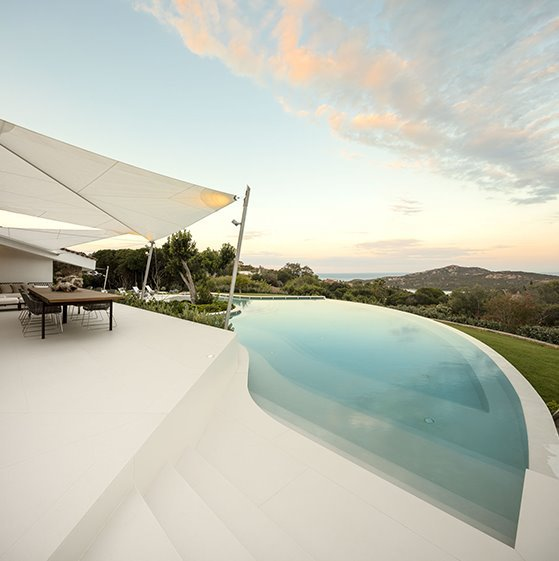In the world of materials technology, the dichotomy between “man-made” and “natural” is often a topic of debate. However, sintered stone emerges as a material that bridges the gap between these two realms, offering a blend of natural beauty and engineered resilience that is reshaping design possibilities.
Sintered stone is crafted through an advanced engineering process that builds on ancient sintering techniques—once used to create bricks, ceramics, and metals. Today’s methods utilize high heat and pressure to fuse natural minerals without the need for synthetic resins or binders. This process, exemplified by Lapitec’s patented vacuum vibro-compression technology, produces a material that is both entirely natural and exceptionally durable.
Why Lapitec Stands Out
Lapitec offers several distinct advantages that make it a preferred choice over traditional materials like marble. It is inherently non-porous and homogeneous, making it ideal for various applications where consistency and durability are paramount. Unlike the resource-intensive quarrying required for marble, Lapitec’s sintered stone’s production is less environmentally invasive and does not produce significant quarry waste.
Comparing Lapitec’s Sintered Stone and Marble
While marble has been a staple in luxury design due to its inherent beauty, it comes with high maintenance challenges. It is porous, prone to staining, and less durable under everyday wear and tear. In contrast, Lapitec sintered stone offers a uniform and compact structure, providing superior resistance to scratches, stains, and thermal shock. These properties make sintered stone a more practical and increasingly popular choice in both residential and commercial projects.
Versatility in Application
The engineered nature of Lapitec allows for its production in large slabs, ideal for expansive surfaces without seams, such as kitchen counters, bathroom walls, and flooring. Its ability to withstand high temperatures and resist chemical damage makes it particularly suitable for kitchen environments where performance and aesthetics must meet.
Lapitec’s attributes extend beyond indoor applications. It is also excellent for outdoor use as cladding on buildings or even in more challenging environments like yachts, where its resistance to UV rays, corrosion, and fire are crucial.
Eco-Friendly and Sustainable
As sustainability becomes increasingly important in material selection, Lapitec stands out as it is the only certified sintered stone100% Silica Free . Made from natural minerals, it is a sustainable choice that supports environmentally conscious building practices. The manufacturing process is designed to minimize impact, aligning with the growing demand for materials that contribute positively to environmental stewardship.
Conclusion
The fusion of natural elements and modern engineering has given rise to sintered stone, a material that not only meets the aesthetic and functional needs of today’s design industry but does so in an environmentally responsible way. As we continue to seek innovative solutions that do not compromise on style or sustainability, sintered stone is poised to play a pivotal role in the future of architecture and design.
With its compelling blend of durability, beauty, and environmental benefits, Lapitec’s sintered stone is truly a cornerstone material in the evolution of modern building materials.
Check out our complete Lapitec Range










